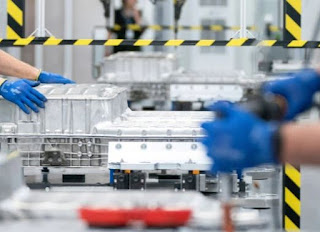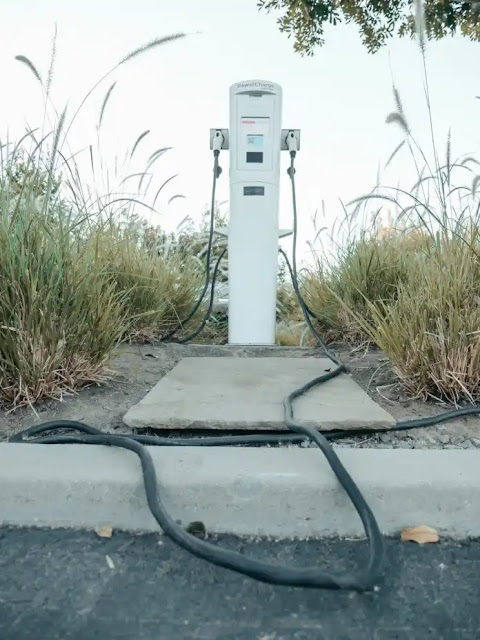About Electric Vehicle
There are many reasons for you to choose an electric vehicle (EV) over a vehicle powered by petrol or diesel. An electric car is much cheaper to run (equivalent to paying 30 cents a litre for petrol), more efficient, doesn't pollute the air with exhaust emissions and delivers an 80% reduction in CO2 emissions.
There are two basic types of EVs: all-electric vehicles (AEVs) and plug-in hybrid electric vehicles (PHEVs). AEVs include Battery Electric Vehicles (BEVs) and Fuel Cell Electric Vehicles (FCEVs). In addition to charging from the electrical grid, both types are charged in part by regenerative braking, which generates electricity from some of the energy normally lost when braking. Which type of vehicle will fit your lifestyle depends on your needs and driving habits. Find out which BEVs and PHEVs are available to suit your needs.
All-electric vehicles (AEVs) run only on electricity. Most have all-electric ranges of 80 to 100 miles, while a few luxury models have ranges up to 250 miles. When the battery is depleted, it can take from 30 minutes (with fast charging) up to nearly a full day (with Level 1 charging) to recharge it, depending on the type of charger and battery.
If this range is not sufficient, a plug-in electric vehicle (PHEV) may be a better choice. PHEVs run on electricity for shorter ranges (6 to 40 miles), then switch over to an internal combustion engine running on gasoline when the battery is depleted. The flexibility of PHEVs allows drivers to use electricity as often as possible while also being able to fuel up with gasoline if needed. Powering the vehicle with electricity from the grid reduces fuel costs, cuts petroleum consumption, and reduces tailpipe emissions compared with conventional vehicles. When driving distances are longer than the all-electric range, PHEVs act like hybrid electric vehicles, consuming less fuel and producing fewer emissions than similar conventional vehicles. Depending on the model, the internal combustion engine may also power the vehicle at other times, such as during rapid acceleration or when using heating or air conditioning. PHEVs could also use hydrogen in a fuel cell, biofuels, or other alternative fuels as a back-up instead of gasoline.
Following some best practices can help you maximize your all-electric range and vehicle efficiency whether you have an AEV or PHEV.
Types of EVs
- EVs (also known as plug-in electric vehicles) derive all or part of their power from electricity supplied by the electric grid. They include AEVs and PHEVs.
- AEVs (all-electric vehicles) are powered by one or more electric motors. They receive electricity by plugging into the grid and store it in batteries. They consume no petroleum-based fuel and produce no tailpipe emissions. AEVs include Battery Electric Vehicles (BEVs) and Fuel Cell Electric Vehicles (FCEVs).
- PHEVs (plug-in hybrid electric vehicles) use batteries to power an electric motor, plug into the electric grid to charge, and use a petroleum-based or alternative fuel to power the internal combustion engine. Some types of PHEVs are also called extended-range electric vehicles (EREVs).
Electric vehicle battery life
Electric vehicle (EV) batteries are sophisticated pieces of equipment designed to last many years.
EV owners can get the best out of their batteries and extend their life by looking after them.
Battery life
EV manufacturers are increasingly offering battery warranties of five to 10 years or more.
Like any product, owners can expect their EV batteries to last well beyond the end of the warranty period.
The ability for a battery to hold a full charge reduces over time (and the associated range of the vehicle reduces), but that doesn’t stop the car from working well.
To help EV owners get the most out of their batteries, we have highlighted some recommended practices to follow and have developed a best practice guide.
How can an EV’s battery life be improved?
There are two ways that an EV battery can gradually fall in performance:
- the way the EV is parked and stored, this is known as calendar degradation
- the way the EV is driven and recharged, this is known as cyclic degradation
You can slow these rates of degradation through some recommended practices. These include:
- Learn to drive your EV efficiently to minimise stress on your battery. This will give you the best daily range, and help your battery last longer.
- Minimise the use of frequent fast charging.
- Minimise recharging to full every day unless you need to.
- In very cold weather (i.e. below freezing), plug in when you can to take advantage of your EV’s battery thermal management systems which will regulate the battery’s temperature so the cold weather doesn’t negatively impact on the battery life.
- When storing your EV for an extended period, follow the instructions in your manual on how to care for your battery.
- Always get your EV serviced by an authorised person and never attempt it yourself.
- Follow manufacturer’s recommendations regarding regular check-ups.
For more information on how to look after your EV battery, see our guide below for some simple tips and check the owner’s manual, which are available online, for more detailed advice. It should explain warranty conditions to ensure you get the full protection of your manufacturer’s warranty as well as the maximum useful battery life.


